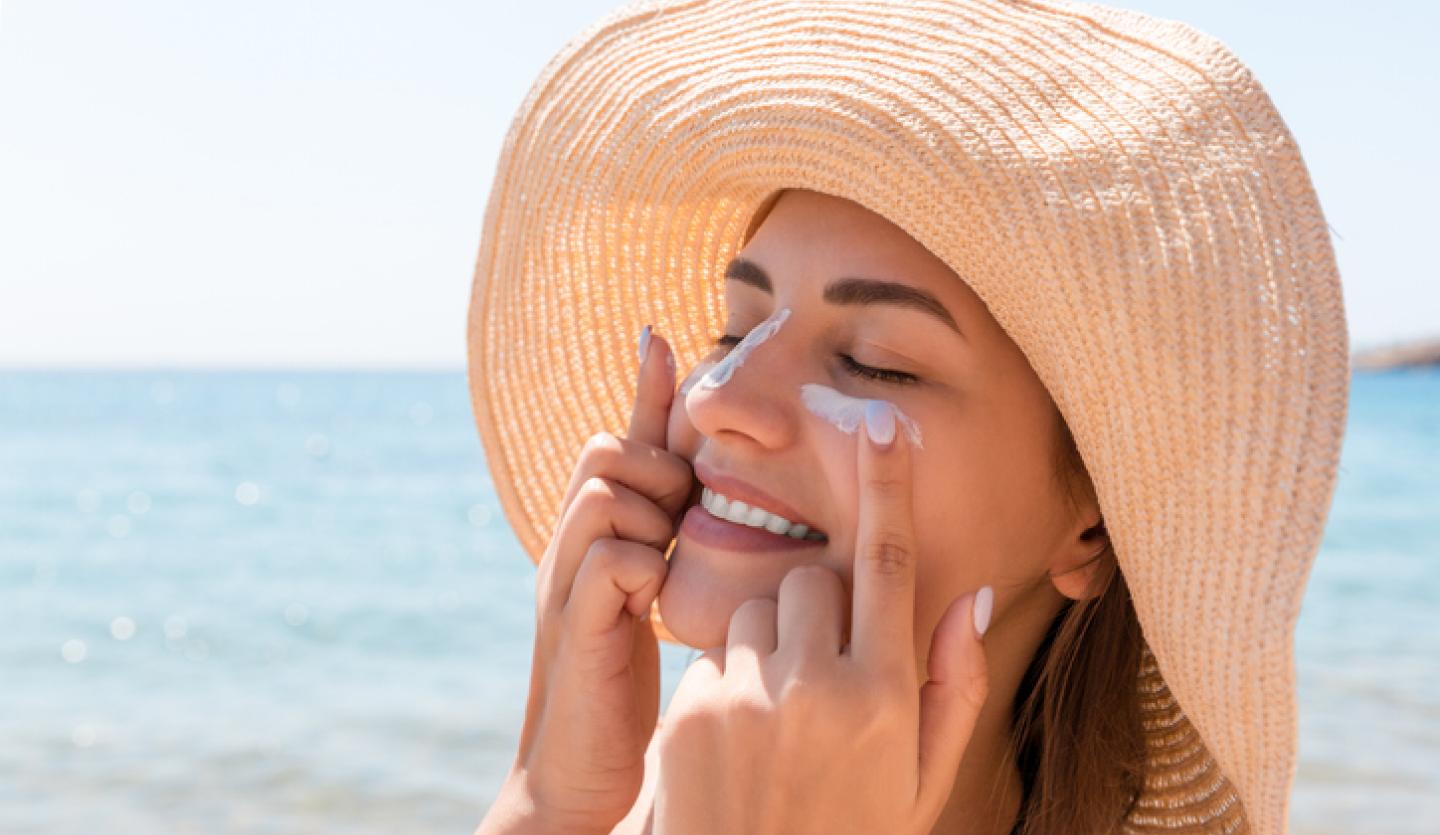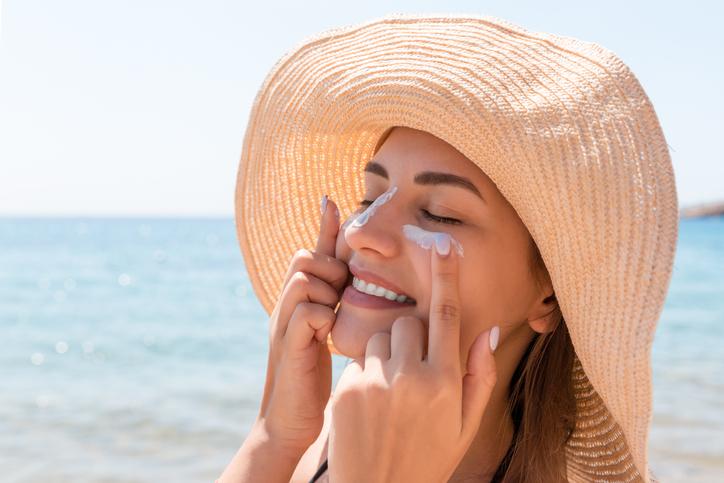What are the benefits of sunscreen?
“When the weather gets warm, especially summertime, many of us look forward to spending more time outside,” said Sherissa Charles, MD, Catholic Health Family Medicine Physician. “Choosing the right sunscreen is one of the best ways to protect your skin and reduce your risk for skin cancer and other sun-related conditions.”
Sunscreen protects your skin from the sun’s ultraviolet (UV) rays. UV rays can damage the skin on a cellular level, leading to premature skin aging and skin cancer. Sunscreen filters out most UV rays but less in some. How much UV light a sunscreen filters out depends on the sun protection factor (SPF) level.
Sunscreen also helps prevent sunburn. UVB rays, at a shorter wavelength than UVA rays, make up 5% of the UV rays from the sun. But UVB rays cause most sunburns. The intensity of UVB rays changes depending on the time of day and year. However, you can get a sunburn during any time of year, even on cloudy days.
Why Gen Z needs to practice safe sun habits
Recent surveys show that Generation Z adults (born between 1997 and 2012) may be less likely to use sunscreen due to a lack of awareness about skin cancer and misinformation on social media. An American Academy of Dermatology (AAD) survey found that 37% of people between 18 and 26 tanned and burned more often than others, leaving them at a higher risk for skin cancer and sun damage. In the study, over half of Gen Z adults indicated they were unaware of sunburn risks. And one in four already has signs of skin damage from the sun.
“This is a troubling trend,” said Dr. Charles. “Visiting tanning salons and exposing yourself to the sun’s UV rays without protection starting at a young age has long-term consequences. Not only does the skin get damaged and age quicker, but the risk for skin cancer increases, including melanoma, the deadliest form of skin cancer.”
She explained that talking to a primary care physician (PCP) is a good first step to getting accurate information about taking care of your skin and choosing the right sunscreen.
“Forming good health habits in your 20s, like protecting your skin from sun exposure, helps you maintain those habits as you age and reduces your risk for health complications,” said Dr. Charles.
What are the different types of sunscreens?
There are two types of sunscreens: mineral and chemical.
Mineral sunscreen (or physical sunscreen) contains titanium dioxide or zinc oxide. Physical sunscreen sits on the surface of the skin and deflects UV rays. It acts like a shield and prevents UV rays from penetrating the skin. Physical sunscreen is also known as sunblock because it blocks rays from reaching the skin.
Chemical sunscreen does not contain titanium dioxide or zinc oxide. It absorbs into the skin and absorbs UV rays before they can cause damage. Chemical sunscreen converts UV rays into heat that the skin can release. The main ingredients in chemical sunscreen include avobenzone, homosalate, oxybenzone, octisalate and octocrylene.
Is sunscreen safe for all skin types?
“Sunscreen is safe and necessary for all skin types and tones,” said Dr. Charles. “A common misconception is that people with darker skin tones do not need protection from the sun. Although melanin, the pigment that gives skin its color, blocks some of the sun’s rays, it does not block them completely. Sunscreen is an effective defense.”
Sunscreen is also available for different skin types, such as dry or sensitive skin. People with sensitive skin may want to choose physical sunscreen since it does not absorb into the skin.
What are the SPF recommendations for adults and children?
The AAD recommends SPF 30 or higher for adults and children over 6 months. Children under 6 months should be kept out of direct sunlight.
The SPF level tells you how well sunscreen protects skin against sunburn. The number after SPF tells you how much longer untanned skin will take to redden. For example, SPF 30 means it would take your skin 30 times longer to burn with sunscreen than without it.
How often should I apply sunscreen?
Apply enough sunscreen to cover any skin your clothing does not cover. Adults generally need about one ounce of sunscreen for full coverage.
Remember to apply sunscreen to your feet, ears, neck and top of your head. You should also use a lip balm with SPF to protect your lips.
Reapply sunscreen every two hours or after swimming or sweating. No sunscreen is truly waterproof. The label should tell you how long the sunscreen lasts while swimming or sweating—many last 40 to 80 minutes.
“Even on a cloudy day, you need to apply sunscreen,” said Dr. Charles. She also noted that avoiding the sun and finding shade or air conditioning on days with scorching temperatures is best to protect your skin and reduce your risk for heat illnesses.
Can I put sunscreen on my face and body?
Sunscreen is available for both your face and body. The skin on your face is thinner than your body's and needs more protection. Facial sunscreens often have unique formulas to make them easier to absorb. Although you can use body sunscreen on your face, it is not recommended.
Do I need new sunscreen every year?
The Food and Drug Administration (FDA) requires sunscreens to retain their original strength for at least three years. If your sunscreen's expiration date has passed, throw it away. If the bottle does not have an expiration date, try to remember when you bought it. If it was more than three years ago, it may have lost its strength and will not be as effective.
If the sunscreen's color or consistency has changed, throw it away. Sunscreen can break down if it is not stored correctly. If the bottle is exposed to direct sunlight or excessive heat, it can lose its effectiveness faster.
Is SPF clothing effective?
Sunscreen is one of several ways to protect yourself from sun damage. Sun-protective clothing can also help. Clothing with an ultraviolet protection factor (UPF), like SPF, also blocks some of the sun’s rays. The color and fabric of the clothing can also make a difference. Dark and bright colors block more UV rays. Sheer fabric is less protective than canvas or denim.
It is important not to rely solely on sunscreen when you go outside. Wear protective clothing, including sunglasses and hats, and seek shade if you are outside between 10 a.m. and 4 p.m. when the sun’s rays are strongest.
Schedule your skin exam
“Talk to your PCP about when you should start seeing a dermatologist for an annual skin exam,” said Dr. Charles. “Also, contact them if you notice any unusual skin markings, spots or growths. They can recommend you to a dermatologist for further diagnosis and treatment.”







